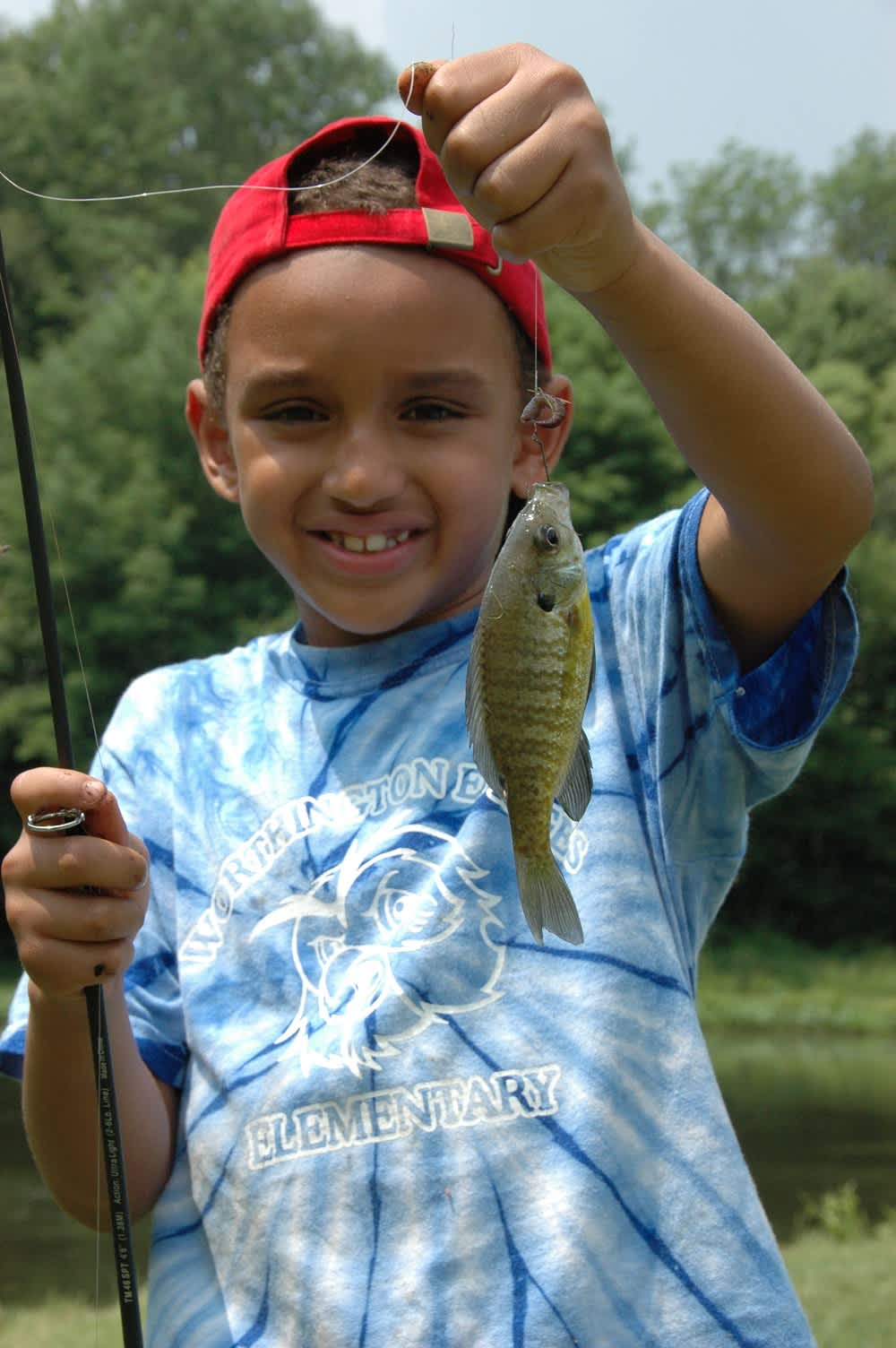Ten Tips on Teaching Kids How to Fish
Dan Armitage 06.02.14

Studies conducted by the American Sportfishing Association show that 90 percent of today’s anglers got their start in fishing before they were 20 years old; 70 percent were introduced to fishing by the time they were 12. Most of us started fishing even earlier than that. Many education experts agree that age 10 is a good time to introduce a child to fishing, and that kids as young as five can pick up the sport—and benefit from it—with a little guidance.
With National Fishing and Boating week coming up in June, there are events organized from coast to coast to offer opportunities to get kids hooked up. Anyone who’s tried and failed realizes there’s more to teaching a child to fish than inviting your grade-schooler along on your next bass fishing weekend. In fact, a common suggestion from those who have a lot of experience teaching children to fish is to leave your tackle at home altogether. You may want to leave the boat in the driveway as well, according to studies that show that anglers whose first fishing experience came while fishing from shore were more likely to continue their interest in the sport.
Here are 10 more tips from the experts that may assist you if you plan to expose a youngster—or an oldster, for that matter—to the joys of fishing this season.
Ten tips for teaching first-time anglers
Tip #1: Start the fishing lesson at home, even days prior to the trip, by visiting the library to get books on fishing or by going to a local bait and tackle shop with the child, allowing the youngster to be a part of the entire process of selecting tackle and asking around about a good place to go fishing.
Tip #2: Practice casting, knot tying, and bobber-setting at home or at the local park, where errant casts can’t catch in overhead trees or stream-side brush and knots and bobbers can be figured out without the hurried anticipation of catching fish.
Tip #3: Keep the child’s fishing equipment simple. A bamboo cane pole is a great first fishing rod, especially for younger anglers. Simple spin-casting tackle, such as the special youth models now offered by several tackle manufacturers, are good choices. Allow the child to have his or her own tackle box to store hooks, bobbers, and sinkers.
Tip #4: Consider trading in your tackle for a camera for the day. By leaving your tackle at home, you are more likely to stay involved in the child’s activities—and less tempted to get caught up in the catching yourself in the event the fishing gets fast! With a camera, you can record the day’s activities, including that most momentous of events: a child’s first fish.
Tip #5: Select a place to fish from shore that offers an abundance of easily caught panfish, such as bluegill, crappie or perch. Docks or piers are excellent places to start, because they are clear of trees and other obstacles that snag casts, and provide cover below the water for fish. Open shoreline areas along ponds, lakes, and slow-moving streams can be good as well. Boats can be used, but keep in mind that kids need space when fishing, and often feel confined when having to stay aboard a boat for any length of time.
Tip #6: Use live bait. Nothing catches panfish more consistently that live bait such as worms, nightcrawlers, crickets, or minnows, and a primary goal of these first fishing trips is to catch fish in order to maintain a child’s interest in the activity. Live bait is also interesting for the child to touch and play with, which he or she should be allowed to do when the fishing gets slow or if the youngster simply wants to do something else for a while.
Tip #7: Use a bobber. Nothing is as fascinating to a child as a bobber dancing on the surface, especially when the child knows what’s causing it. The bobber also provides some casting weight, allows the child to see and feel strikes, and keeps the bait up off the bottom in front of the fish and away from underwater snags.
Tip #8: Take plenty of snacks and drinks, different kinds of bait, and make sure you’ve got raingear, jackets to match the weather, and insect repellant and sunscreen if needed. You want the child to be as comfortable as possible during the fishing session.
Tip #9: Keep the first sessions short. When the child says it’s time to go home, go! You want these first trips to be remembered as something fun, and when the fun ends for a child, it’s time to end the fishing trip, no matter how well the fish are biting or how early in the trip it might be.
Tip #10: Talk to the child during the fishing trip. Talk about anything, remembering that these are important times for youngsters, who value their time with you (whether they show it or not) and are perfect times to share feelings about anything under the sun. You can discuss angling topics like conservation, fishing tactics, what makes a bobber work, or social subjects like what it takes to do well in school or get along with friends and family members or the value of clean water and a healthy environment.
For information about places near you that offer good fishing opportunities for children, contact your local fishing tackle shop or department of natural resources office. Many beginning fishing books are available at your local library, and a non-profit organization called the American Sportfishing Association’s Future Fisherman Foundation offers children’s workbooks and materials for first-time fishermen. Contact the Foundation by calling the ASA offices at 703-519-9691 or visit www.takemefishing.org.

